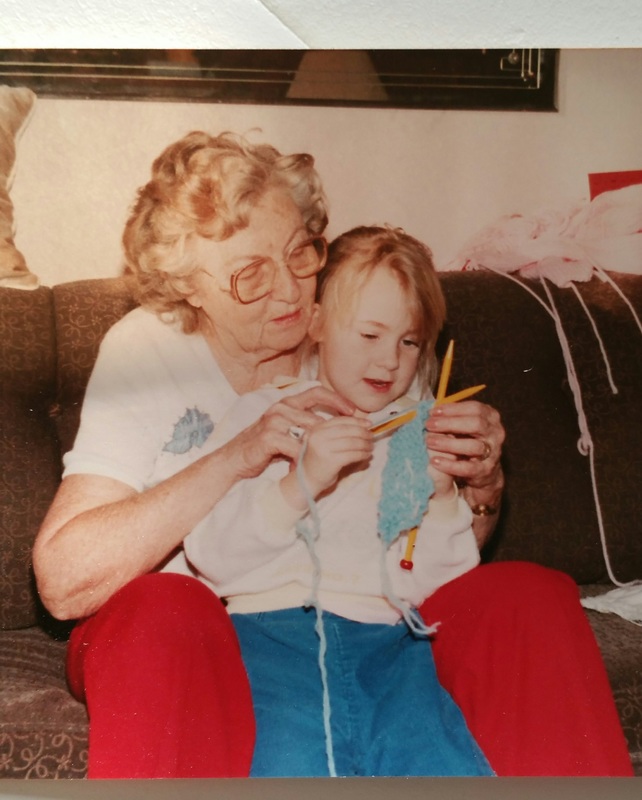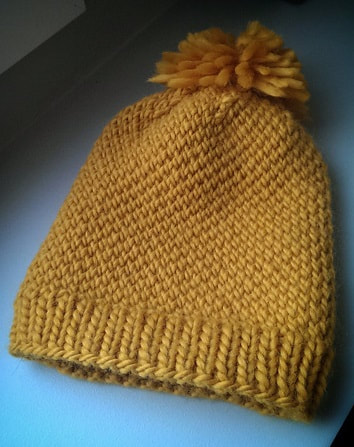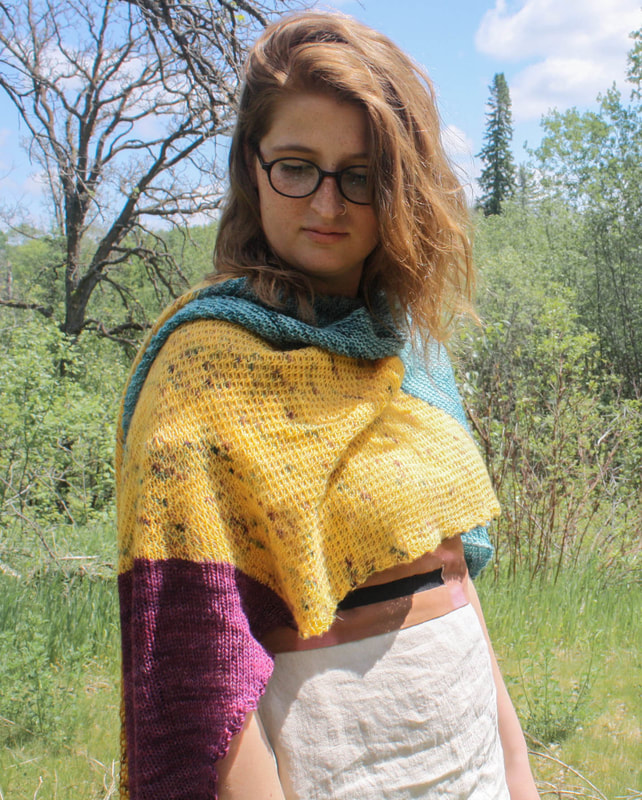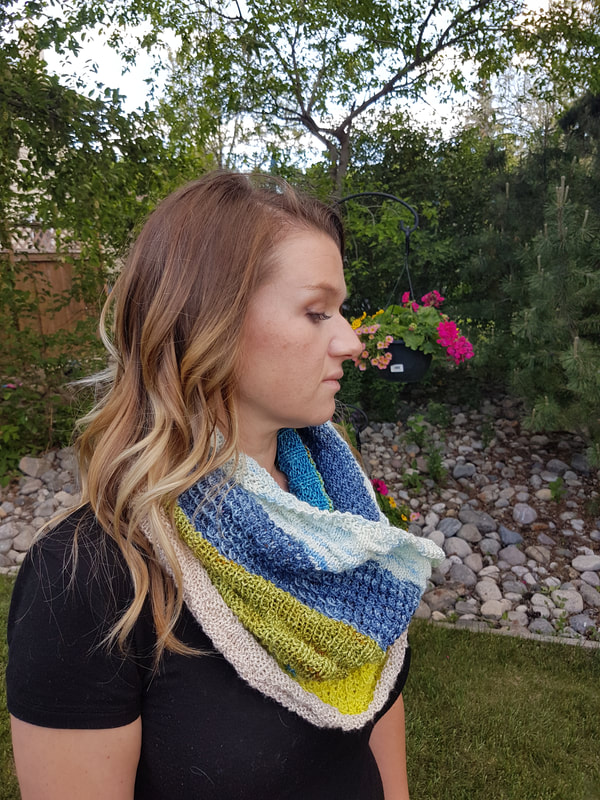 I had some hankies I wanted to dye to make the mawata mitts like the Yarn Harlot. I used this tutorial (sorry some of the pictures are blurry) I used about 44 g of silk and soaked them in vinegar for a day  As the hanky was draining, I got my dyes ready  I poured my dyes on and let them sit for a while to penetrate the hankies  I then baked them in the over at 185F for 30 mins. When I took them out I let them sit in warm warter again ans let some of the dye leech out. I hung them up to dry and they came out way different than I expected lol I am going to try it again but the next time I am going to split the stack in half so the dye penetrates evenly. and both mitts will be the same(ish). It was fun though!
0 Comments
I decided a while ago that I love handspun more than commercial yarn. I love the process, the uniqueness, the surprise and the finished product. I love how the yarn when spun can/will look a lof different from the fibre sometimes and other times it looks pretty much the same. I love the handmade look of handspun items and I especially love how much better the item feels on. I even told Jeremy that if he was choosing between fibre and yarn for me, always choose the fibre. I have made a new years resolution to spin at least 4 oz of fibre a month.... on a spindle and try to make a pair of socks a month. I have been doing well so far in this first week of the year. I am going through one of my Phat Fiber boxes and I am going to spin every sample with my little sweetheart golding I also received this gorgeous "Sheep to Shoe" kit from my friend Hilary and I spun it up into 2 ply yarn and I am making plain socks. I love them. It is so rewarding to finally make handspun socks. I specifically learned toe up socks for this, and only this. Thanks Hilary <3 such a thoughtful gift  So this is all I worked on today I have obtained a new to me Indian book charkha from my friend Deb and it has fascinated me more than I ever thought. There is so much history behind this type of spinning wheel and I have grown to appreciate cotton. As both a tool and a symbol of India's independance the charkha has really evolved into a very useful and portable spinng wheel. Used mainly to spin fibres with a short staple length this type of wheel is used by turning a drive wheel by hand and spinning off a spindle. I am still learning how to use it to its full potential and I am very slow with it but it is such an amazing piece of machinery The spindles are small and very sharp but I read they can fit around 100 yards of yarn/spindle and their ratio is anywhere from 100:1 or 125:1...wow! You usually spin using the long draw method and with cotton punis but I drafted out a bit and added twist on this spindle. I am very proud at how fine I got it :D The coolest feature of this wheel is the skeiner. This confused me until I saw a picture of it because I had no idea how it might work but voila! And here it is, everything in it's place I am presenting on this to my spinning guild on thursday. Lets hope I can get it spinning perfectly then
|
Follow Me:PatternsCategories
All
Archives
August 2023
|

































 RSS Feed
RSS Feed
